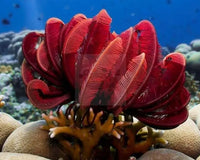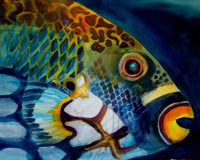The ocean is home to myriad fascinating creatures, and amongst them, the seahare stands out as both an intriguing and beneficial addition to marine ecosystems. Classified scientifically as Dolabella auricula, this unique mollusk is renowned for its efficiency in controlling hair algae, making it a must-have for aquarists and marine enthusiasts alike.
Understanding the Seahare
The seahare is a type of sea slug and belongs to the class Gastropoda, which explains its soft, elongated body resembling that of a hare. Typically observed in shallow waters near rocky shores, seahares have evolved to thrive in environments abundant in algae, providing them with both habitat and sustenance.
Physical Characteristics
Usually exhibiting a muted palette of greens, purples, and browns, the seahare blends seamlessly with its algal surroundings. One of their most remarkable features is their ability to produce a purple dye for defence. This dye, often released when the animal feels threatened, serves as a distraction for predators, allowing the seahare to escape unharmed.
Habitat and Behaviour
Seahares are mostly found in the sandy and rocky substrata of the ocean floor, where they graze on algae and other plant materials. They prefer well-lit environments where filamentous algae flourish, as this rich source of food supports their growth and reproduction. They are typically nocturnal, favouring night-time foraging behaviours to evade potential predators.
The Role of the Seahare in the Ecosystem
One of the primary roles of the seahare in the marine ecosystem is algae control. Hair algae can proliferate rapidly in certain environments, leading to imbalances in the aquatic ecosystem. By consuming these algae, seahares help maintain the health of their environment, preventing algal blooms that may deplete oxygen levels in the water and harm other marine life.
Benefits to Aquarists
For marine hobbyists, introducing seahares to a home aquarium can offer numerous benefits. Their natural inclination to feed on hair algae makes them an effective, low-maintenance solution to algae growth. This not only aids in keeping the aquarium clean but also contributes positively to the overall bioload of the tank, making them a functional addition for aquarists looking to maintain a balanced ecosystem within their aquariums.
Feeding and Care
Caring for seahares is relatively easy, assuming their dietary needs are met. These marine creatures primarily feed on various types of algae, and it is crucial to ensure that the aquarium environment supports adequate algae growth. Some aquarists may need to supplement their diet with algae sheets or other forms of marine plant life to ensure they receive sufficient nutrition, especially in newly-set up tanks where natural algae may not yet be abundant.
Breeding Seahares
In controlled environments, breeding seahares can be challenging due to certain environmental requirements they need to spawn successfully. However, in favourable conditions, they can reproduce throughout the year. The fertilised eggs are laid as strings of jelly-like films, which hatch into free-swimming larvae. These larvae eventually settle and metamorphose into adult seahares.
Environmental Considerations
As mariculture and ocean farming practices continue to evolve, it's essential that the collection of seahares for aquariums is done sustainably. Over-collection can impact local ecosystems, particularly in areas where they play an essential role in controlling algae. It is crucial to source seahares from responsible dealers who emphasise sustainability and ethical marine practices.
Conclusion
In summary, the seahare is an incredible mollusk that not only captivates with its unique appearance and biological adaptations but is also an efficient hair algae eater. By incorporating these remarkable creatures into marine environments, both natural and aquariums benefit from their algae-eating capabilities. If you're considering adding a seahare to your aquarium, ensure your tank provides ample algae for them to thrive while contributing to a healthy aquatic ecosystem.





